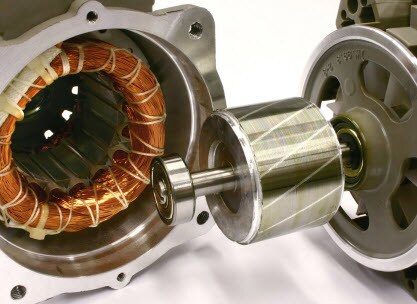 Typical automobiles today use a large number of permanent magnets in motors and sensors throughout a car. For the most part, these magnets are comprised of Neodymium (Nd), Iron (Fe) and Boron (B). However, additions of small amounts of other elements change the magnetic properties of the material as well as its corrosion properties, and in certain cases improve utility at higher temperatures.
Typical automobiles today use a large number of permanent magnets in motors and sensors throughout a car. For the most part, these magnets are comprised of Neodymium (Nd), Iron (Fe) and Boron (B). However, additions of small amounts of other elements change the magnetic properties of the material as well as its corrosion properties, and in certain cases improve utility at higher temperatures.
As part of incoming inspection, companies that build motors need to confirm that the correct grade of material was supplied or whether the supplied material satisfied the requirements of the grade. In some cases it may be important to investigate failures.
The nature of the material makes this a difficult analysis. NdFeB magnets are formed by sintering a mixture of the powdered constituents at certain temperatures and pressures. The result is a dominant matrix populated by at least two other phases. The exact composition depends on the grade of the material. Heterogeneous structures like this are difficult to analyze.
To obtain the average composition with high accuracy, a typical procedure includes X-Ray Fluorescence (XRF) technology or Inductively Coupled Plasma Mass Spectroscopy (ICP-MS). These techniques produce a very high precision analytical result describing the average composition of the material, but lack any structural information–which is critically important as it is the size, distribution, and composition of the phases that, in part, determine the magnetic properties of the material.
Although heterogeneous materials cannot easily be quantified, they may be characterized. It is straightforward to inspect the material and analyze anomalies. Also, it may be possible to know that two materials are either very similar or different even if the materials cannot be quantitatively described. Finally, it is possible to measure the microstructure in a reproducible manner.
The SEM uses a fine electron beam to probe the sample. The EDS is able to identify the elements present wherever the electron beam impinges on the sample. The electron beam can be focused very tightly such that features much less than one micron across can be inspected. Moreover, little sample preparation is required beyond polishing the sample to a flat surface. For magnets, one additional requirement is that they be demagnetized. SEM/EDS provides multiple techniques for analysis:
Point Analysis: One of the simplest EDS techniques is to visually inspect a sample and direct the electron beam to conduct analyses at a specific points. The result is one or more elemental analyses as well as an image documenting their locations and the appearance of the sample.
Mapping: A more sophisticated analysis technique is called Spectral Imaging (SI). In this case the field of view is selected by the analyst then the computer rasters the electron beam in a grid pattern across the sample. The result is a two dimensional array of spectra that describe the elemental composition of the area.
Match: Match provides a simple, reliable method for identifying materials based on the similarity of their measured spectra to spectra from known materials.
Feature Sizing and Chemical Typing: FSCT can be used to count the different visible features in a field of view and measure their sizes, shapes and elemental compositions. Most often this is used with Analysis Automation to measure features over a large number of fields. The result is a table of numbers characterizing hundreds, if not thousands of features in a material.
Our next article will outline spectral imaging and mapping of metals in the automotive industry . If you can’t wait, download SEM/EDS Techniques for Analyzing NdFeB Magnet Material in the Automotive Industry for a detailed explanation of each measurement technique as well as images, spectra, maps showing elemental distributions in a region of the sample, and data tables.






Leave a Reply